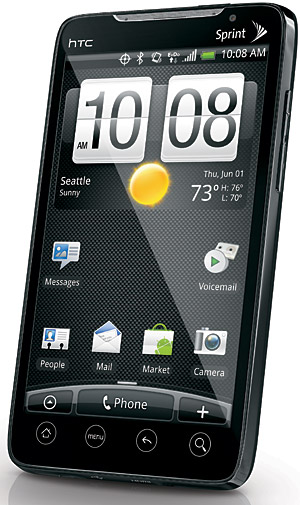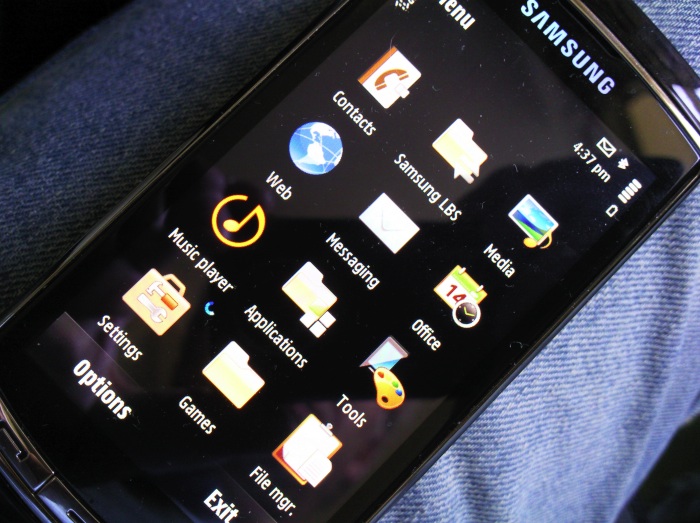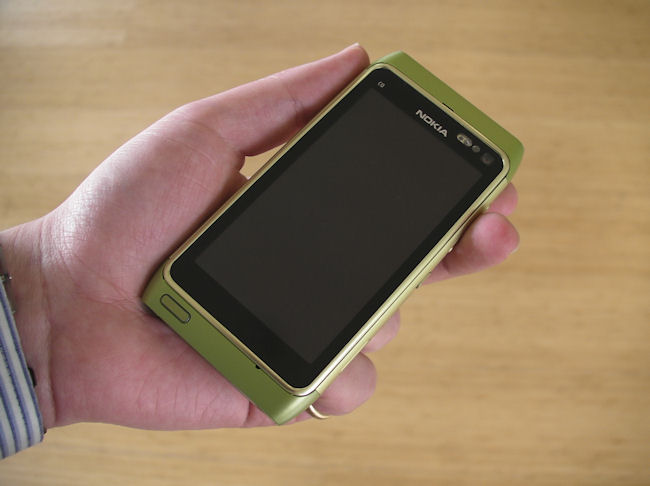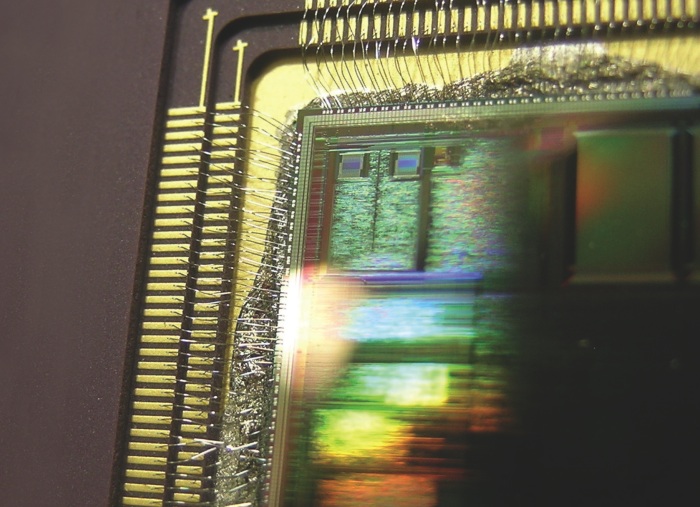A realistic expectation?
This rant started with listening to the Mobile Tech Roundup podcast, programme 210 (MP3 here). Now, don't get me wrong, I love Matt, James and Kevin who produce this in the USA and Canada, they know their stuff and I always respect their opinions. But in programme 210 (and mentioned also in 211) there was a new concept that had me reeling.
Here's a quote from Kevin early in the show, in response to some listener criticism of the HTC EVO 4G for its disappointing battery life (reputed to not get through a day of use), and in the context of mentioning carrying around spare batteries:
"A lot of people say that's not acceptable, a phone's battery should last all day". And I say "Why is that (not) acceptable to you? We often have multiple batteries for our laptops.... Just because something's able to be put into your pocket and has a smaller screen doesn't mean it has to run all day on one battery. Would that be nice? Absolutely. But it's not a realistic expectation as we use these phones more, almost like primary devices."
Again, this isn't a criticism of Kevin - he's just voicing the wisdom of the age, but I'm sorry, we have to draw the line somewhere when it comes to mobile technology. For me, one of the fundamental minimums (and absolutely a realistic expectation) for a smartphone is that it has to get through a day of heavy use, i.e. through to its nightly charge, with capacity to spare.
"Take an extra battery" is one piece of oft-given advice - nice in theory, but it's a pain to have to shut down all apps and power down the phone, swap cells (assuming you'd remembered to charge the spare in the first place, in-situ) and then power everything up again, wait for the OS to boot and then start up your apps. It's not a solution that anyone will be comfortable with day to day.
"Take a mobile charger along" is another. Again, a good idea, but it's one more gadget to bring along and one more gadget to charge up at night - and more thing to go wrong or to lose.
What's needed is the certainty that, apart from grossly profligate mis-use (me using the Nokia N93 to video a party springs to mind - an hour of constant video capture did for the battery charge completely!), you won't be let down by a pathetic beep in the late afternoon as the phone reports that it's about to die. The HTC EVO 4G does rather sound as if it's in that category.

The laws of physics versus a real world use case
But wait a minute - the Mobile Tech Roundup guys go on to say, quite sensibly, "What do you expect? You've got a device with a super large, super bright screen, with an always-on fast 4G data connection..." The laws of physics and all that. To which I'd reply that HTC (in this case) should have thought of this and fitted a larger battery, even at the expense of an extra millimetre of case depth. In this case, putting in a 1800mAh cell or even a 2000mAh one.
Bringing the same idea back to the Symbian world for a moment, we have (for example) the Nokia N97 mini and the Sony Ericsson Satio, with batteries of only 1200mAh and 1000mAh respectively. For top-end smartphones! In the real world, as I've proved to myself twice now, set out on a London trip (so mobile email, a little light pedestrian navigation, an hour's video watching and an hour's music) with one of these devices in your pocket and you'll be reaching for a backup battery (or backup phone) by mid afternoon - it's simply not good enough - again, they're not guaranteed to last the day - and so fail.
But power is obviously a priority in the minds of some Nokia designers - for every N96 (2.8" screened, but with tiny BL-5F, at 950mAh), we have a E55 (tiny 2.4" screened, but with Li-Poly BP-4L, at 1500mAh, shown at the top of this feature). Admittedly, the use case for an E55 (or E52, or 6650, or E71, and so on) is a little different to that of a Nokia N97 mini or HTC EVO 4G - the very screen size means that long periods of web browsing and video watching won't be pleasant, for example. My Nokia E55 can go a week between charges if I'm careful with the mobile data. Yes, I said a week.
Maybe a week is a bit extreme - unless you're off camping somewhere in the wilds (and even then the mobile data would kill the battery because it would be such a stretch to make contact with a cell tower). But it's 100%, repeat 100% not unreasonable to expect a smartphone to be designed such that, for its intended use, its battery lasts a full day, and with a bit to spare, maybe a 20% margin of error.
So, how can manufacturers assure this is, in fact, the case (and thereby avoid the wrath of Steve Litchfield)?
____
Here are five ways to improve battery life in modern smartphones:
Fit larger batteries, where necessary.
Yes, there will be a slight impact on physical size, perhaps an extra millimetre of thickness. But come on, would you rather look 1% more stylish when handling your smartphone in public or have guaranteed power that gets you home? The N97 and N97 mini are offenders in this regard, since their rear cases bow out anyway for keyboard stability and feel in the hand - why on earth didn't someone say 'Hey, let's use some of that hollow for a larger battery'?
In fact, I have to think quite hard to come up with battery offenders in the Symbian world - the efficiency of the OS and the relatively small screen sizes mean that Nokia's phones have some of the longest use times in the mobile world - this point is mainly aimed at devices in the Apple, Android and Windows Mobile worlds. Of significance is that Apple has put in a battery that's 25% bigger for their iPhone 4 - pity the processor's far faster and there's double the RAM - so the effects will probably cancel out.
Make more of OLED power savings
The idea is that because OLED screen pixels 'light themselves up', black or dark areas of the screen consume no (or next to no) power. The saving can be as much as fifteen times, as we found out last month. But all the good work is undone, in spectacular fashion if you then let the marketing team decide what 'theme' to apply to the phone. For OLED-screened devices like the Nokia N85/86, N8, Samsung i8910 HD and, from the wider world, Google Nexus One, HTC Desire, Samsung WAVE, Galaxy S and many more, choosing a light theme (or even wallpaper) as the default can have a dramatic impact on the power drain - an OLED screen showing a near white image will use up an order of magnitude more power doing exactly the same job as a near black image/wallpaper (the Samsung i8910 HD is shown below running the Just Black theme). Bottom line - let the engineers have a say in the wallpaper, theme and graphical effects?

Keep the screen size down
From 3.5" screens (iPhone, Nokia N97), we've progressed to 3.7" screens (i8910 HD, Google Nexus one, etc) to 4.3" screens (HTC Incredible/EVO 4G/HD2) and even 5" (Dell Streak). Quite apart from the sheer impracticality of such large screens for everyday/one-handed use (another rant for another day), there's the extra power needed to drive/light them. Double the screen size and you quadruple the number or pixels (and usually the area they take up, as well) and thus quadruple the power needed.
Where's the sweet spot? 3.2" is a little small for full touch use, especially when trying to hit web links and keys on a virtual keyboard, so I'd guess at 3.5" - which is also where Apple's (iPhone 4) and Nokia's (N8) designers have ended up (shown below). And owners of the 4.3"-screened EVO shouldn't be too surprised to see their battery bars dropping at a rate of knots.

More radio intelligence needed
The single biggest power drain on the modern smartphone is its appetite for mobile data, by which I mean keeping a 3G, 3.5G or even 4G data connection active via the nearest cell tower. While not a huge problem when in the city, with cell towers all around, when in the country (or when travelling) the smartphone's radios have to really ramp up the transmit power to make a decent connection. Assuming that you don't actually need data all the time and can live without it for short periods (you Internet addict, you..) then it can make a huge difference in battery life to disconnect the data connection when not needed.
This isn't trivial to automate and a degree of experimentation is required. In the Android world, one of the most popular utilities is JuiceDefender, a third party app which tries to do exactly what's described here. On a Symbian-powered phone, I tend to run the Java-based Gmail client for my main email and, when travelling, I physically exit the app after a mail check, so that the data connection gets dropped again. With other email systems, you'll have to play with the settings. Web and social network clients can, of course, also be closed when not needed. The ten second wait when starting/connecting them again is far preferable to watching your power drain away the rest of the time.
What's really needed, on all platforms, is more intelligence here. I'd like to see the OS drop and re-connect cellular data connections as needed, to save power. Surely even a push email addict can wait five minutes for a new mail check, as the OS and applications 'pulse' a data connection, do the check and then drop it again quickly?
Slower, not faster
There's a current craze for speed, from raw processor specifications to the number of frames per second that a smartphone's user interface runs at. We're even seeing enthusiasts deliberately 'over clock' their devices in the quest for faster and faster operation. Is it any wonder that battery life has suddenly become critical?
The Nokia E63 and E71's processor runs at 370MHz, the best-selling 5800's at 434MHz, and I've never heard any of these phones described as 'slow'. As with the insane drive for sped on the desktop, resulting in multi-core monsters that still leave the hourglass spinning, in many apps, for much the same function (e.g. starting up Word), for as long as it used to under Windows XP on our old Pentiums, the secret of better interface response is better code. Not to take the way of the lazy programmer and simply accept the code as-is, cranking up the processor, in some cases beyond 1GHz nowadays.
Again, I think most of us would rather have an interface that runs 20% slower and a battery life that's 20% longer. With a little effort, I'm sure that manufacturers and OS creators could easily design around processors that are significantly slower than 1GHz and still produce sparkling response and media playback.

__________
So that's five ways that manufacturers could move forward in terms of battery life. I refuse to accept that it's acceptable for a smartphone to run out of juice before the end of a normal day and I refuse to accept that it's normal to carry around spare batteries or extra chargers, however good they may be.
- Back in the mid 1990s, a whopping fifteen years ago, my Psion Series 3a multitasking, wide-screened, qwerty-keyboarded pocket computer lasted for a month on two AA batteries (total capacity around 3000mAh for the pair).
- Ten years ago, my Palm IIIc ran happily on one 1600mAh charge for a fortnight.
- Five years ago, my Nokia 9500 powered along for three days on its 1500mAh battery.
- Three years ago, my Nokia N95 8GB would accomplish its snapping/communicating/entertaining for a full two days with no argument.
Are we really saying that, in order to use a 2010 smartphone, the 2010 way, we have to accept that it's not even going to make a day?
Thankfully, in the Symbian world, this is less of an issue. The biggest-screened mainstream phone is the Nokia N97, with a big 1500mAh battery and with decent life. (The Sony Ericsson Satio has the same screen but only a 1000mAh battery and struggles, but this is a far more niche device.) There are a truckload of 3.2" screened smartphones, from the Nokia 5800/5230/X6 to the Sony Ericsson Vivaz, with variations in battery from 1000 to 1500mAh, though each lasts happily through a day, given typical usage.
The upcoming Nokia N8 has a built-in 1200mAh battery, i.e. it's not even changeable, which worries me a little. Let's hope that Nokia has thought about the other four of my five main points above and that battery life isn't an N8 Achilles heel. In the meantime, to the HTCs of this world who are producing handsets that run out of juice by mid afternoon, back to the drawing board, I'm afraid, battery life is one area where noone should compromise!
Steve Litchfield, AAS, 20 June 2010

